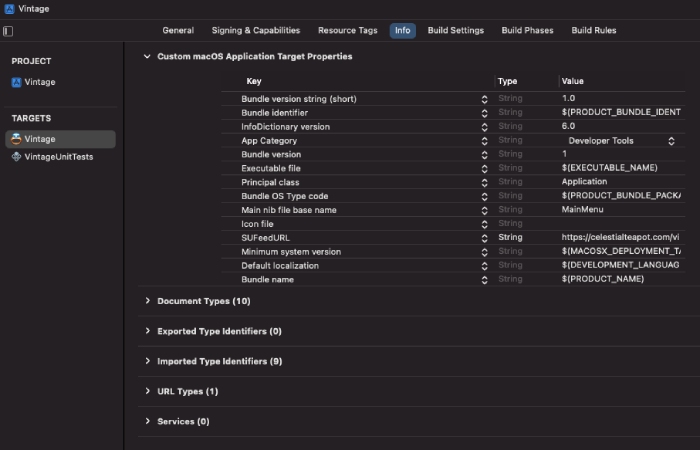errordomain=nscocoaerrordomain&errormessage=specified command not found.&errorcode=4. NSCocoaErrorDomain is a set of error codes used in macOS and iOS applications. This helps developers identify and troubleshoot issues that may occur during the runtime of their applications. When an error occurs, the system returns an error message containing specific information. For example, the error message might say “opches command not found”, which translates to “this command not found”. This message is related to error code 4 and helps developers understand what went wrong.
Understanding NSCocoaErrorDomain is essential for creating robust applications. Developers must handle errors efficiently to ensure a smooth user experience. Using the error codes provided, such as error code 4, they can troubleshoot problems quickly. This knowledge allows them to fix issues before users notice them. Therefore, knowledge of the command errordomain=nscocoaerrordomain&errormessage=specified.&errorcode=4 is not found, which is the key to improving application performance.
Understanding Error Codes in NSCocoaErrorDomain

Error codes in NSCocoaErrorDomain are crucial for application development, as they provide information about what went wrong. Each error code agrees to a specific problem that developers may face while working with their applications. For example, error code 4 indicates that a particular command is not found, which is represented by the message “specified command not found”. Knowing these codes helps developers quickly identify the source of the problem and take appropriate action.
Error handling is an vital part of programming. By understanding error codes, developers can write higher-quality code that anticipates potential problems. This preventative approach helps prevent outages and increase user satisfaction. When an application encounters an error, a clear message and code, such as errordomain=nscocoaerrordomain&errormessage=specified assignment not found, is needed.&errorcode=4 simplifies debugging and troubleshooting. Ultimately, a clear understanding of error codes leads to more reliable and easy-to-use applications.
Also Read:How to Hide Your Number With *67
Exploring Error Code 4
Error code 4 in NSCocoaErrorDomain indicates that the specific command was not found. This error usually occurs when a request attempts to access a reserve or perform an action that does not exist in the current context. For example, if a user tries to open a file that has been moved or deleted, the system will return this error code. The attached message “specified command not found” confirms this, indicating that the given command cannot be found.
Understanding error code 4 is essential for troubleshooting. When developers face this error, they should check if the requested resource is available or if there are no typos in the command. This error can too occur due to incorrect settings or outdated references in the code. By identifying the root cause, developers can fix the problem and ensure the proper functioning of their application. In general, knowing the command errordomain=nscocoaerrordomain&errormessage=specified not found.&errorcode=4 helps to improve the overall reliability of the application.
Interpreting the Error Message
The error message “the specified command was not found” translates to “this command was not found”. This message appears when an application cannot execute a specific command due to a lack of resources or incorrect references. Understanding this message is vital for developers, as it provides context for diagnosing issues in their applications. It informs them that something is wrong with the issued command, leading to a closer examination of the code.
When developers see this error message related to error code 4, they should consider a few factors. They must check whether the command is valid and whether the resource it is trying to access exists. Sometimes, simple mistakes such as typos or incorrect routes can cause this error. By carefully interpreting the message and investigating its cause, developers can implement effective solutions. This preventative approach to understanding errordomain=nscocoaerrordomain&errormessage=specified assignment not found.&errorcode=4 ultimately results in better application performance and user satisfaction.
Also Read:AzureWave Technology leading wireless solutions in 2024
Common Causes of Error Code 4
Error code 4 in NSCocoaErrorDomain can be due to several common issues that developers should be aware of. A common reason is to try to access a resource that has been deleted or moved. For example, if an application tries to open a file that is no longer in the expected location, it will throw this error. This can occur due to user actions, such as moving files, or due to changes in the application’s directory structure.
Another reason for error code 4 is misuse of the command. Developers may make mistakes in their code, such as misspelling a command or using incorrect syntax. These errors can cause the system not to recognise the command, resulting in a “specified command not found” error message. In addition, problems with configuration settings or permissions can also prevent commands from running correctly by identifying these common causes errordomain=nscocoaerrordomain&errormessage=specified command not found.&errorcode=4, developers can fix potential problems before they affect users.
How to Handle NSCocoaErrorDomain Errors

Error handling in NSCocoaErrorDomain is critical to ensuring a smooth user experience on macOS and iOS apps. When an error occurs, developers can use error-handling techniques to handle the situation effectively. A standard method is to use try-catch blocks. This allows developers to attempt to perform an operation and identify any errors that may occur, providing the ability to react to problems without crashing the application. For example, if an operation completes unsuccessfully and returns an error code of 4, developers can appropriately notify the user and log the error for further investigation.
In addition to try-catch blocks, developers must provide users with clear error messages. When users encounter problems, they should receive understandable feedback, such as the “specified command not found” error message. This helps users figure out what went wrong and what actions they can take. In addition, detailed error logging can help developers troubleshoot and improve the application by effectively handling errors related to errordomain=nscocoaerrordomain&errormessage=specified command not found.&errorcode=4, developers can improve the overall reliability and user satisfaction of their applications errordomain=nscocoaerrordomain&errormessage=opgegeven opdracht niet gevonden.&errorcode=4.
Also Read:What is DDOS Attack And How To Protect Your Website
Debugging Tips for Error Code 4
Debugging error code 4 in NSCocoaErrorDomain requires a systematic method to identify and fix the underlying issues. First, developers should read the “specified command not found” error message carefully. This message is a clear indicator that the application is attempting to execute an unrecognized command. By identifying which part of the code this error occurs in, developers can narrow down the circle of possible causes and focus their efforts on fixing the problem.
Another practical debugging tip is to check resource paths and command syntax. It is essential to make sure that the command is spelled correctly and that all paths point to existing files. Developers can also use the debugging tools available in Xcode, such as breakpoints and the console, to track program progress and inspect variables at runtime. In addition, reviewing the application’s configuration options can help identify permission issues that may be preventing commands from running by performing the following steps to fix the errordomain=nscocoaerrordomain&errormessage=specified assignment not found.&errorcode=4, developers can correct the error and improve the reliability of their application.
User Impact of NSCocoaErrorDomain Errors
Errors in NSCocoaErrorDomain, such as error code 4, can significantly affect user interaction. When users encounter the “specified task not found” message, they may feel frustrated or confused, especially if the application cannot clearly explain the problem. Not understanding what went wrong can generate dissatisfaction and a feeling of low app quality. If users encounter this type of error frequently, they may abandon the app altogether.
To mitigate the impression of these errors, developers should focus on providing a smooth interaction with the user. This includes implementing clear error messages that will help users understand the problem and suggest possible solutions. In addition, providing users with ways to report bugs can help developers collect feedback and improve the app by eliminating errors related to errordomain=nscocoaerrordomain&errormessage=specified assignment not found.&errorcode=4, developers can increase user trust and loyalty, which ultimately leads to a more successful application.
Preventing NSCocoaErrorDomain Errors in Development

Preventing errors in NSCocoaErrorDomain, especially error code 4, is essential for creating reliable applications. An effective strategy is to conduct exhaustive testing in the development phase. By testing various scenarios and extreme cases, developers can identify potential issues even before the app is launched. This preventative approach helps identify problems related to lack of resources or misuse of equipment at an early stage errordomain=nscocoaerrordomain&errormessage=opgegeven opdracht niet gevonden.&errorcode=4.
Another important prevention method is to establish clear coding standards. Developers should ensure that all commands are properly documented and used consistently in the source code. Periodic code checks can help catch errors such as typos or misconfigured routes that may cause a “specified task not found”. In addition, the use of automated tools for error checking and resource management can significantly reduce the likelihood of errors occurring related to errordomain=nscocoaerrordomain&errormessage=specified assignment not found.&errorcode=4. By adopting these best does, developers can improve the reliability of their applications and user satisfaction.
Conclusion
In conclusion, understanding NSCocoaErrorDomain and its associated error codes, especially error code 4, is crucial for developers working on macOS and iOS apps. The specified command not found error message indicates a situation in which a particular command cannot be executed, often due to a lack of resources or incorrect settings. By learning how to interpret these error messages and applying effective error-handling strategies, developers can increase the reliability of their applications.
In addition, implementing preventive measures in the development process, such as exhaustive testing and compliance with coding standards, can significantly reduce the occurrence of errors by solving problems related to errordomain=nscocoaerrordomain&errormessage=specified assignment not found.&errorcode=4, developers not only improve user interaction but also strengthen trust and satisfaction among their users. Ultimately, a proactive approach to error handling contributes to the overall success of any application errordomain=nscocoaerrordomain&errormessage=opgegeven opdracht niet gevonden.&errorcode=4.
FAQs
What is NSCocoaErrorDomain?
NSCocoaErrorDomain is a predefined set of error codes that are used during macOS and iOS development to handle errors that may occur in applications. It provides developers with a standardized way to identify specific errors and react to them, improving error handling and troubleshooting. Each error code corresponds to a particular problem, which helps developers diagnose issues quickly and efficiently.
What does error code 4 in NSCocoaErrorDomain mean?
Error code 4 means that the specific command is not found. This can happen when a request tries to run a command that references a resource or file that does not exist or has moved. When this error occurs, developers receive a “specified command not found” message, indicating that the command cannot be executed because it is not available errordomain=nscocoaerrordomain&errormessage=opgegeven opdracht niet gevonden.&errorcode=4.
How can I handle NSCocoaErrorDomain errors in my application?
For efficient handling of NSCocoaErrorDomain errors, developers can use try-catch blocks in their code. This allows them to perform operations and detect any errors that may occur, ensuring proper error handling without crashing the application. In addition, providing users with clear error messages and bug logs can help developers identify and resolve issues more efficiently.
What are the common causes of error code 4?
Common causes of error code 4 include trying to access a resource that has been removed, moved, or specified incorrectly in the code. This error can also occur due to typos in the commands or problems with the configuration settings. By understanding these reasons, developers can troubleshoot and troubleshoot underlying issues more effectively errordomain=nscocoaerrordomain&errormessage=opgegeven opdracht niet gevonden.&errorcode=4.
How can I avoid errors in NSCocoaErrorDomain during development?
To avoid errors in NSCocoaErrorDomain, developers should perform exhaustive testing throughout the development process. This involves testing different scenarios to identify potential problems. In addition, meeting coding standards, performing periodic code reviews, and using automatic bug-checking tools can help detect bugs early on, minimizing the risk of errors such as “specified command not found.

